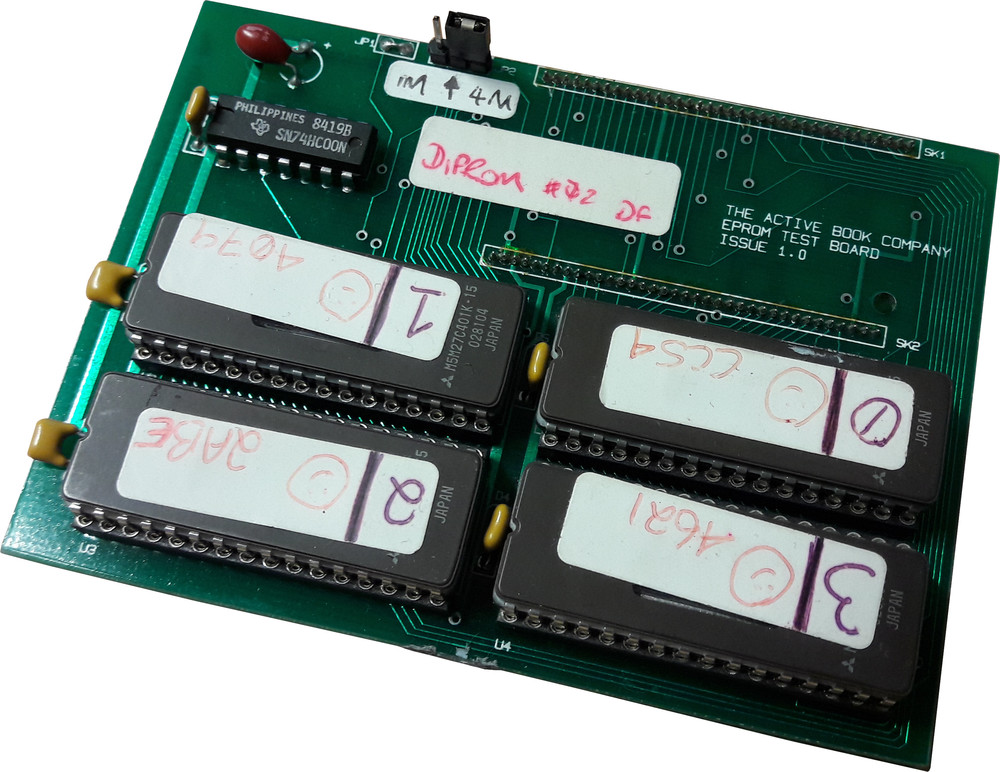Active Book Eprom Test Board
| Home > Browse Our Collection > Peripherals > Circuit Boards > Active Book Eprom Test Board |
|
In 1988, Hauser left Olivetti to start the Active Book Company, investing one million pounds of his own money. Not wanting to repeat the mistakes made by Acorn, which had kept its technology to itself, he demonstrated the Active Book to as many large companies as he could. AT&T acquired Active Book and incorporated it into EO in July 1991. Hauser became Chief Technical Officer and Chairman of EO Europe. Olivetti & Co, already an 80% shareholder in Acorn Computers Plc, had a 7% stake in Active Book Co Ltd, the new company of Acorn co-founder Dr Hermann Hauser, taking the total funding to $5m. The Cambridge company was formed to develop and market a revolutionary pen-based concept in notebook computers. Dr Hermann Hauser, who was the co-founder of Acorn Computers Plc and helped develop the BBC Micro planned to launch his A4-sized computer through his current Cambridge-based Active Book Company Ltd. To achieve this goal Active Book has signed an agreement with Acorn giving it access to the Acorn RISC Machine design as a standard cell, and to the Acorn RISC operating system. Hauser included ARM in his custom design chip Hercules which uses super-integration techniques to produce a multi-function chip. Claiming to be ahead of both Japanese developments and Intel in chip design, Hauser says that his Hercules array will include a video controller, memory management and direct memory access with the RISC CPU. The chip will be produced for the manufacture of the Active Book Computer. The computer will not have a keyboard - users will point and write to use its features. Although the Active Book never reached the market, we are extremely lucky to have a couple of prototypes of the Active Book in our collection. This board was plugged into the Active Book to test the ROMS, and contains 4 ROMS, a single other chip and a jumper switch. Date : 1988Manufacturer : Active Book Physical Description : Circuit board This exhibit has a reference ID of CH53921. Please quote this reference ID in any communication with the Centre for Computing History. |
|










